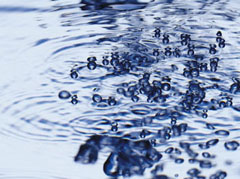语音讲解:
(点击右键“另存为”可下载语音)

If you were to assume that spending a day at a spa was a new concept, you would be greatly mistaken. Archaelogical evidence indicates that ancient peoples, including the Egyptians and the Chinese, were well-aware of the healing qualities of bathing. In many cases, bathing was linked to religious teachings and notions of purity.
The ancient Greeks and Romans incorporated1 bathingsintosdaily life. In fact,“spa”is derived from the Latin phrase“Sanus per Aqua”. which literally translates into“health through water”. Both civilizations erected bathhouses to cater to their people for many different purposes: for exercise, relaxation, or as a social center.
These days, spas have experienced a revival. Today’s customer can enjoy the usual goodies, such as massage and manicure, as well as ancient Ayurvedic treatments, which are purported2 to have rejuvenating properties.
In European spas, the“Rhassoul”is currently one of the most sought-after treatments. This black clay wrap originated in Morocco and is thought to be the oldest of its kind in the world. The Rhassoul is said to have both healing and pacifying3 effects. The endurance of treatments as old as the Rhassoul is proof that interest in such therapies is not merely a passing trend.
From facials to yoga classes, herbal remedies to body wraps, today’s spas have it all. If there was ever a time to pamper4 yourself, it is now.
| ![]() 本网站由北京信息港提供网络支持
本网站由北京信息港提供网络支持
